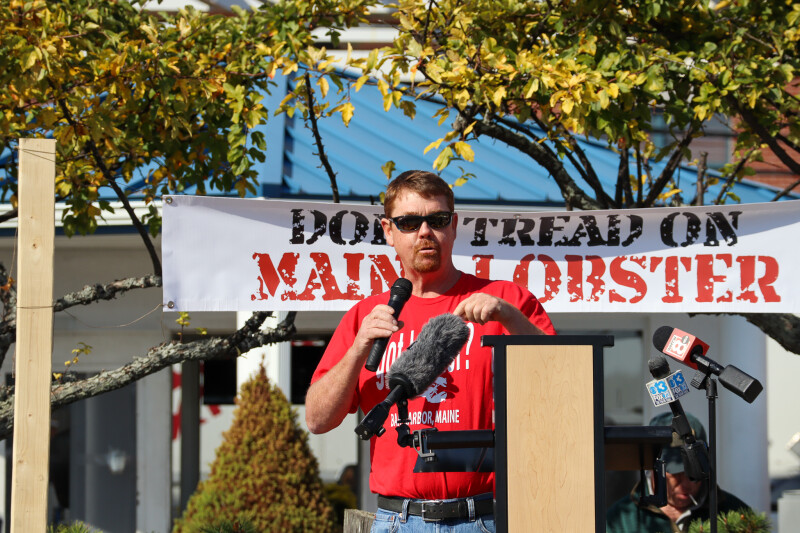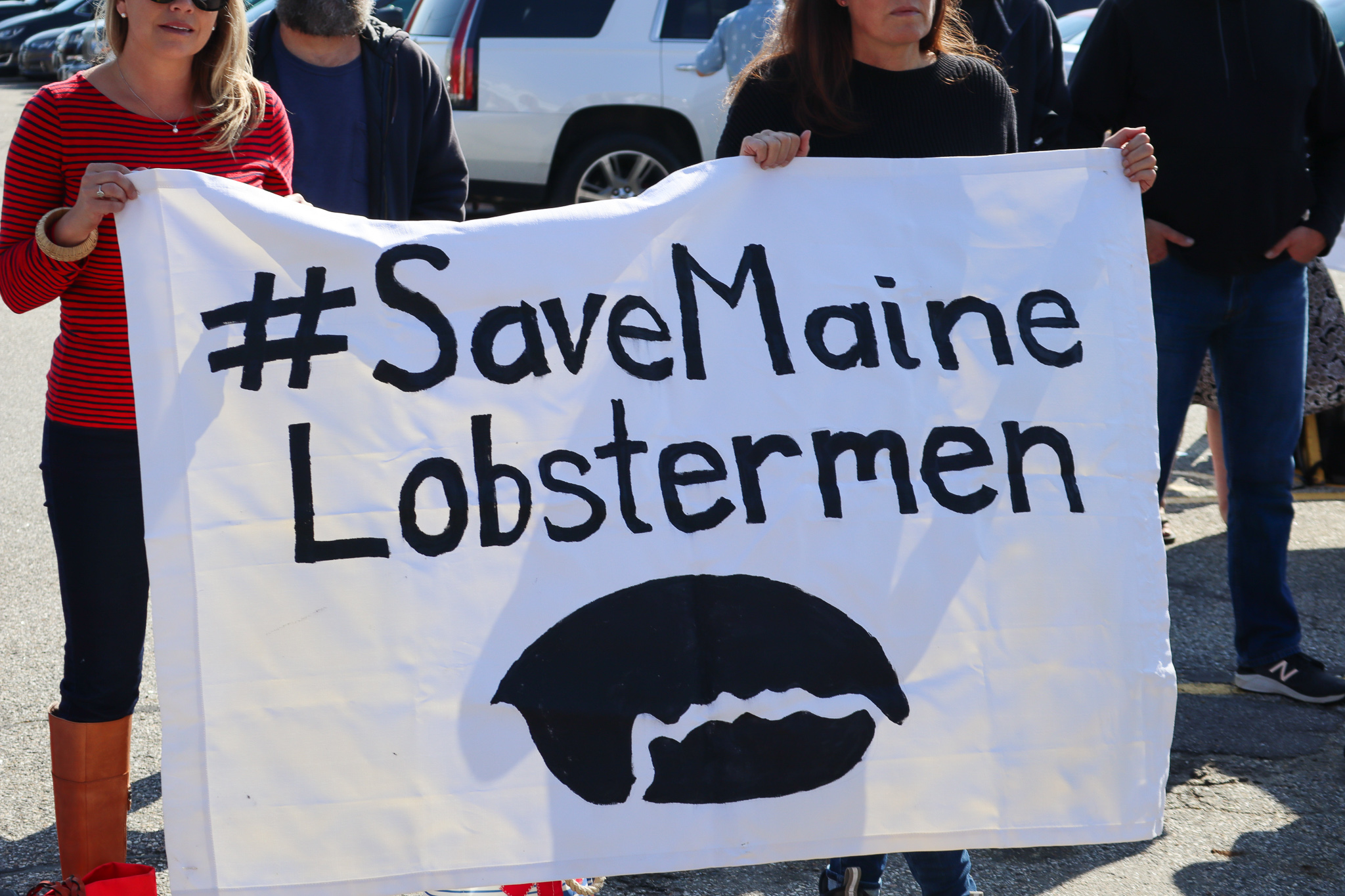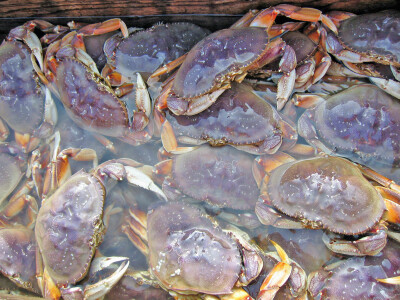After a quarter century working with regulators to protect endangered North Atlantic right whales, Maine lobstermen have had enough. It has become clear that no matter what the industry does, it will never be enough.
The lobstermen have showed good faith. They have sacrificed to protect the right whale even as they have strived to preserve their livelihood and way of life.
On the other side of the coin, whale advocates have made clear that the lobster industry and the thousands of jobs it provides along the Maine coast are acceptable collateral damage.
Last week in Portland, 200 fishermen, supporters, and politicians rallied on Long Wharf — a onetime fish pier whose pilings no longer nest trawlers — to raise public awareness of the lobstermen’s plight.
Lobstermen have taken as much as 30,000 miles of line out of the water. They have converted to sinking line and increased the number of traps per trawl, reducing vertical lines in the water and increasing the potential for gear loss. They have rigged breakaway links on their gear, promoting more losses. One thousand square miles of fishing area is to remain closed seasonally and a ropeless gear mandate is looming.
Yet in July, the federal judge ruling in a lawsuit brought against the National Oceanic. and Atmospheric Administration by right whale advocates said that wasn’t enough. NOAA is now calling for a 90 percent reduction in risk of whale entanglement.
Fishermen everywhere are familiar with NOAA’s proclivity to “move the goalposts.” This level of risk reduction would move them entirely off the field. “Ninety percent will crush us,” Billy Bob Falkingham, a Winter Harbor lobstermen, said at the rally.
The rally was also intended to persuade the state to act as plaintiff in the industry’s lawsuit challenging NOAA. Maine’s attorney general says the state, in its present legal role as intervenor, has fully advanced the lobstermen’s case.
This explanation rings hollow with lobstermen. Assuming the role of plaintiff would bring clout to a case that seems destined for the U.S. Supreme Court.
This is not a lawsuit to placate an aggrieved industry. It is a lawsuit to preserve an economically viable way of life in a state that isn’t overflowing with them: Maine’s economy ranks eighth worst in the nation, according to the personal finance website WalletHub. Such rankings are arguable, but they make a point.
Former Gov. Paul LePage, who is seeking the office again, said that if he is elected, Maine will be a plaintiff in the suit “on January 1.”
Last month Seafood Watch, the food-nanny arm of the Monterey Bay Aquarium, added lobster to its “red list” of species to avoid. So far, the listing seems to have had little impact on sales, and the Marine Stewardship Council has not withdrawn its blue ecolabel of sustainability from American lobster. But in terms of public perception, these listings can be damning out of all proportion to their sometimes scant scientific basis.
Old fishing industry hands will recall the “Give Swordfish a Break” campaign of the 1990s. Organizers proclaimed the commercial extinction of swords was at hand. Hundreds of restaurants bought into the campaign and took swordfish off the menu. Fortunately, diners were not persuaded and told their favorite chefs as much. Swordfish was soon back on the menu and still is today.
Several fishermen at Wednesday’s rally stated they had never seen a right whale. NOAA and environmental advocates may regard these declarations with skepticism, but the evidence — or lack of it —supports lobstermen. The last known interaction between right whales and lobster gear off Maine took place in 2004. There has never been a right whale fatality linked to the gear of Maine fishermen.
NOAA should worry about its own evidence. Like weather forecasts, whale population statistics are modeled. NOAA and whale advocates view the models as data.
We should not contemplate the unemployment line for an entire industry based on modeled population swings of a few dozen animals. And certain components of modeling, such as estimating “cryptic mortality” — unconfirmed whale deaths — are intended to reset population estimates downward.
Last year’s Maine lobster landings were worth about $730 million off the boat. Lobsters are the backbone of the state’s $8 billion tourism industry. The state should be champing at the bit to become plaintiff in this suit.
Where the suit will go is uncertain. The Marine Mammal Protection Act and the Endangered Species Act must be reckoned with. However, common sense must figure as well.
If the right whale population is dwindling despite increasing restrictions on lobstermen even as there is no evidence of interaction with Maine’s lobster fleet, the court may well ask NOAA to check its math or find another scapegoat.








